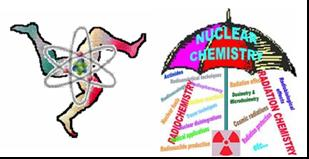Speaker
Claudia Landstetter
(Austrian Agency for Health and Food Safety)
Description
A method for the determination of 90Sr and 210Pb in freshwater fish was developed. The determinations were conducted within a project on behalf of the Federal Ministry of Health. The aim of this project was to get an overview of natural radionuclides and artificial radionuclides in freshwater fish in different lakes in Austria.
For sampling the Neusiedler See in Burgenland, two lakes in Styria the Grundlsee and the Toplitz See and the Zeller See in Salzburg were chosen. Chub (leuciscus cephalus), pike (esox lucius), perch (perca fluviatilis), carp (cyprinus carpio), catfish (silurus glanis), pike-perch (sander lucioperca) and burbot (lota lota) were analysed.
The fish sample was ashed and dissolved in concentrated HNO3 with intermittent additions of H2O2. After ammonium oxalate precipitation the 90Sr and 210Pb precipitate was washed with water and then the oxalate was destroyed by fuming off with concentrated HNO3. 90Sr and 210Pb were separated with strontium specific extraction columns from Triskem. 90Sr was stripped from the column with 0.05 M HNO3 and 210Pb with 0.1 M ammonium oxalat solution. Measurements were conducted with a Quantulus 1220. For the determination of the chemical recovery first the initial strontium and lead concentration in the sample was measured and then a Sr(NO3)2 and Pb(NO3)2 carrier solution was added. The strontium and lead concentrations were measured with ICP-MS.
In this paper the method for the determination of 90Sr and 210Pb is described and the results are discussed.
Author
Claudia Landstetter
(Austrian Agency for Health and Food Safety)
Co-authors
Dr
Arno Achatz
(Austrian Agency for Health and Food Safety)
Dr
Christian Katzlberger
(Austrian Agency for Health and Food Safety)
Dr
Merita Sinojmeri
(Austrian Agency for Health and Food Safety)
